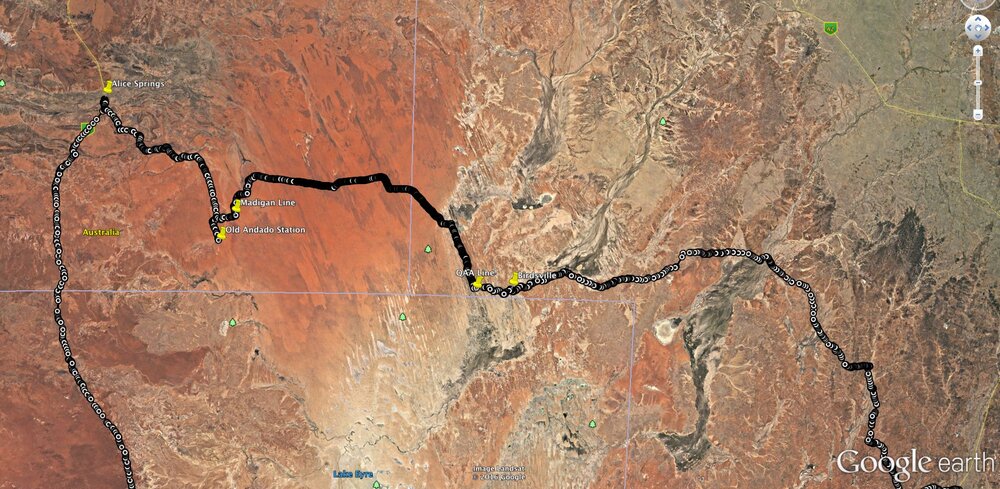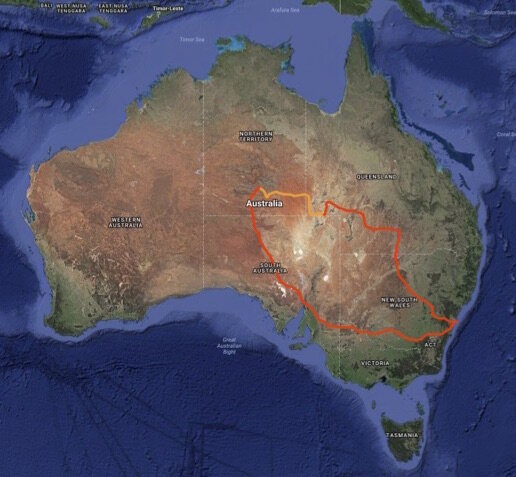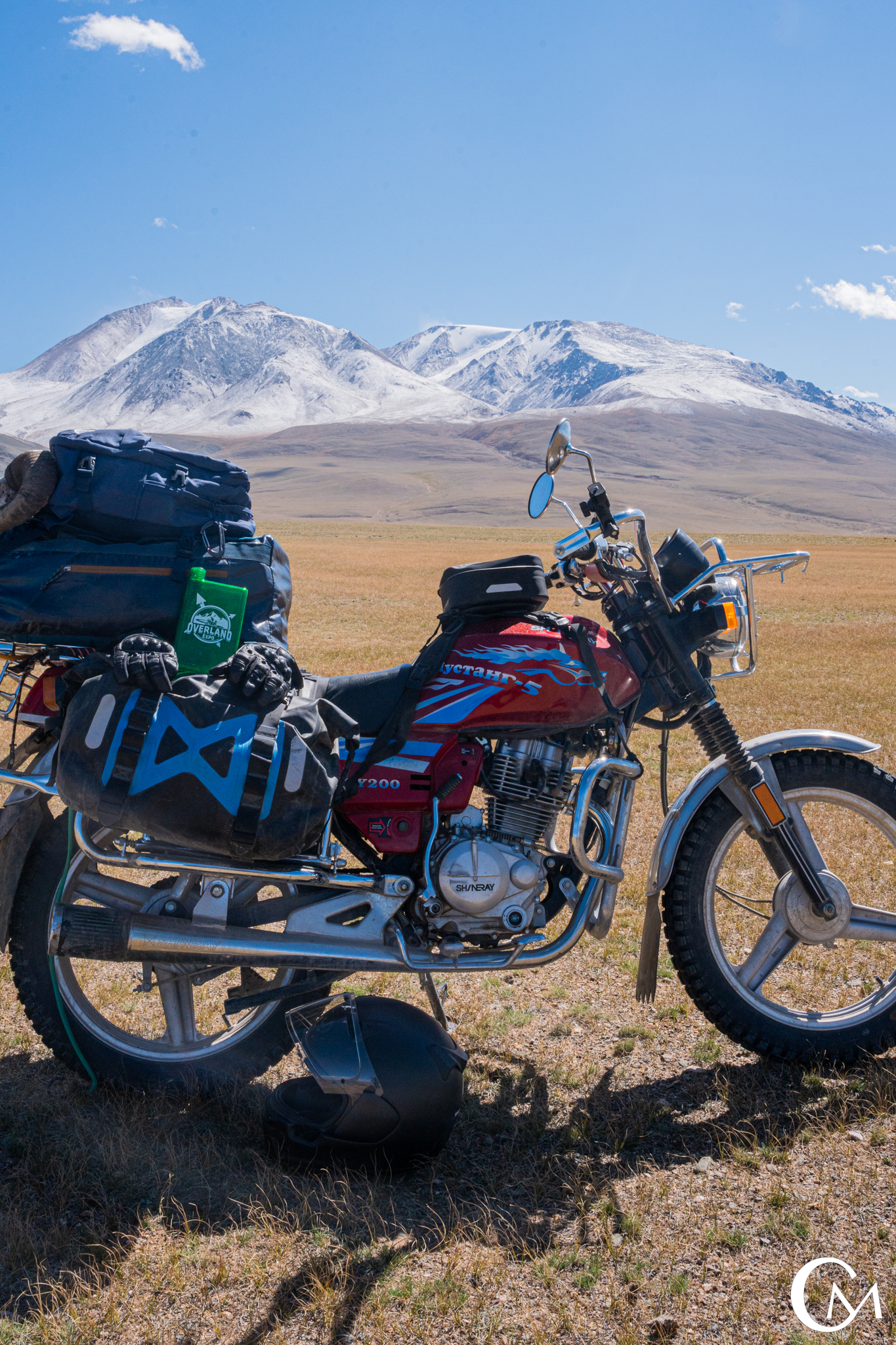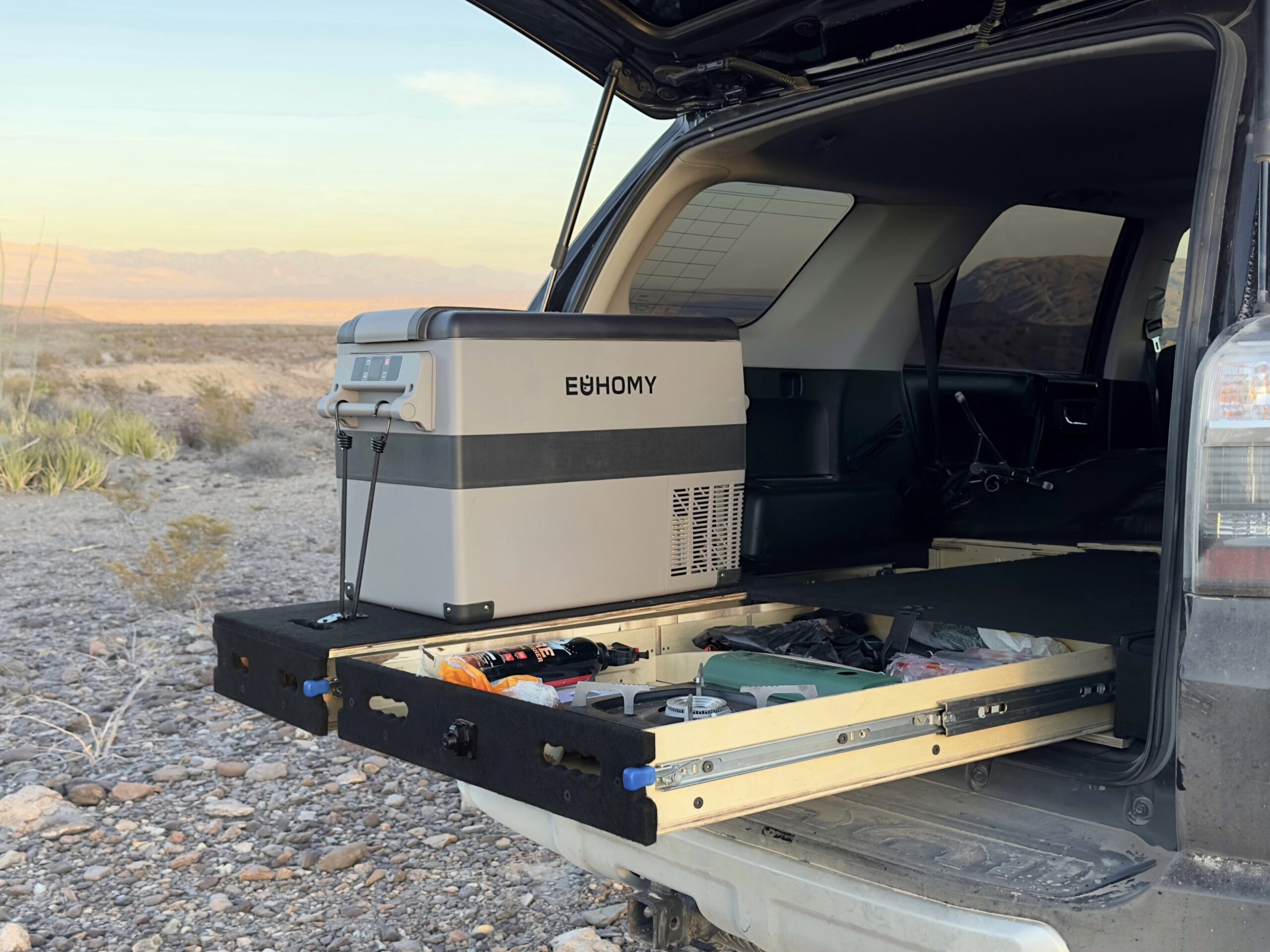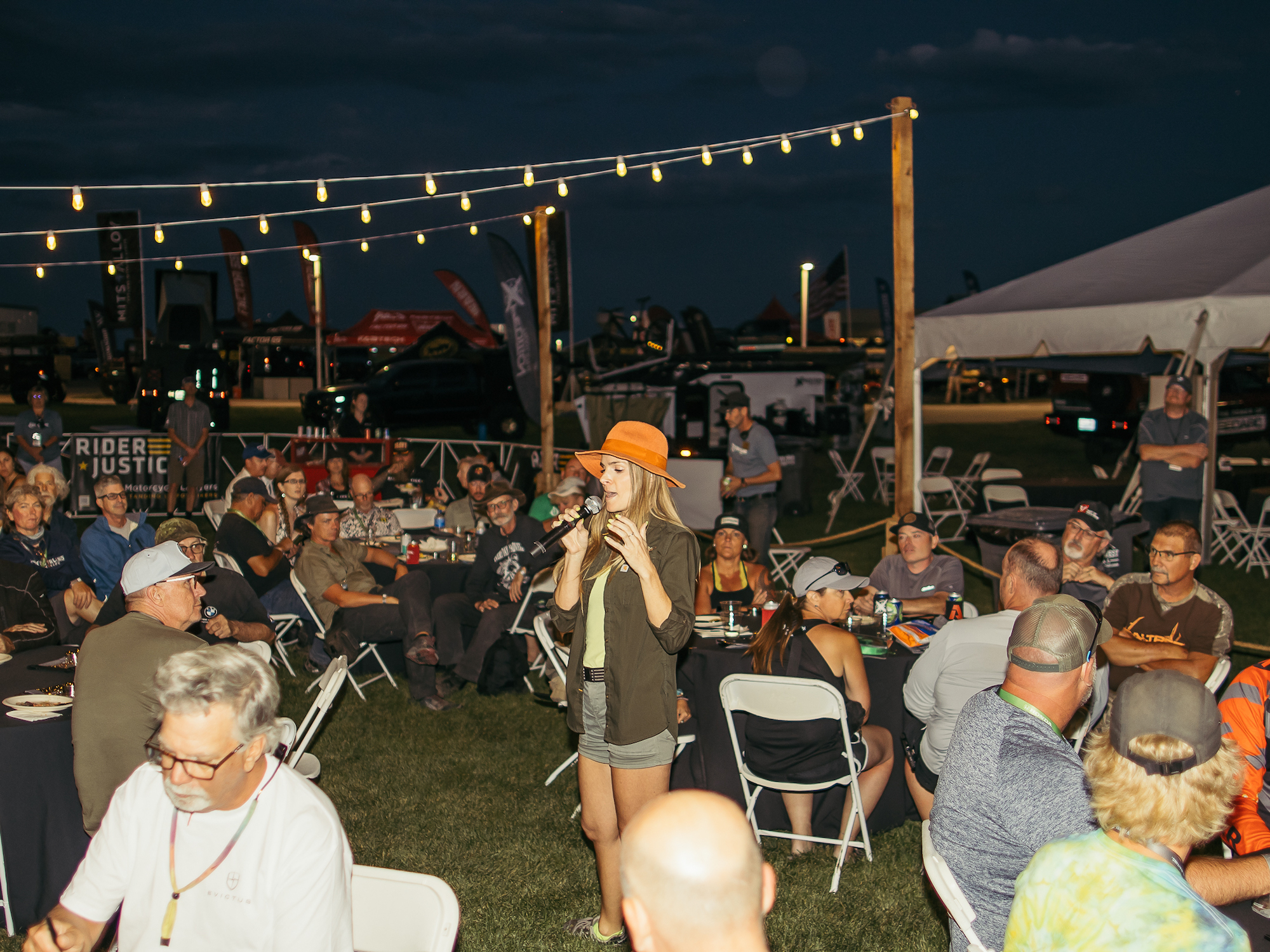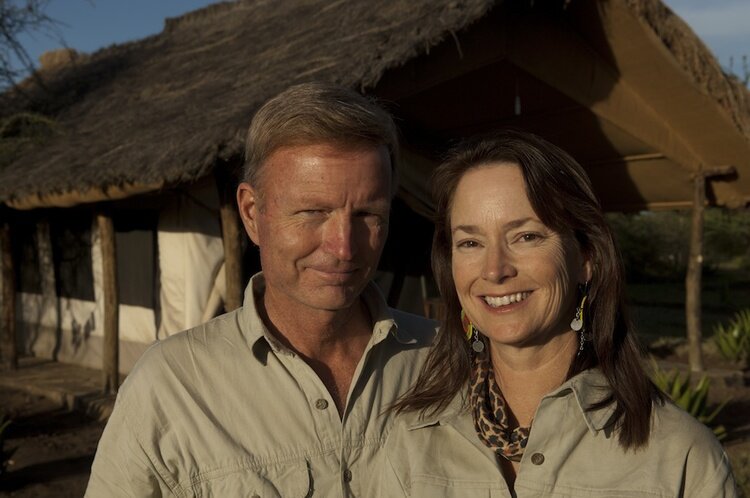
EXPLORING OVERLAND
JOIN OVERLAND EXPO FOUNDERS ROSEANN AND JONATHAN HANSON EXPLORING OVERLAND, WHETHER IT’S CLOSE TO HOME OR ACROSS THE GLOBE, THROUGH WORDS, IMAGES AND FIELD ARTS.
FOLLOW ROSEANN @ROSEANNHANSON
FOLLOW JONATHAN: OVERLAND TECH & TRAVEL
It is a cool winter day in July, the Australian bull-dust tamed by recent rains, so I can enjoy a clear view of the passing show of wildflowers out the side window.
Not for the first time, I look across the vehicle at Jonathan and we grin. Four months prior, we had been planning a trip to England for July. Here we were instead, crossing the Simpson Desert, in our own custom expedition-camper Land Cruiser Troopy.
READ MORE: ULTIMATE EXPEDITION VEHICLE PART 2: INTERIOR BUILD & TRANS-AFRICA ADVENTURE
As it often happens with us, it just . . . happened. In March, when I was booking tickets to England to visit friend and colleague Tom Sheppard, as usual I went to Kayak.com, punched in the dates for July 2016, and did a double-take: fares were starting at $2,000 USD per person round trip to London. That was twice what we usually spend on our semi-annual visits across the Pond.
And just then, like magic, a little Kayak fare-alert pops up: “Sale! Round Trip Los Angeles to Sydney $849.”
Whoa. We’ve always wanted to visit Australia.
Click.
Passengers: 2;
Depart LAX: 14 July 2016
Return LAX: 11 August 2016
Extra bags: 1 each ($2ea. add-on special)
Special diet requests: Nope.
Calculating fare . . . $851 + tax USD each person RT on Air New Zealand.
Continue with purchase?
“Hey, Jonathan . . .”
Done. Australia here we come.
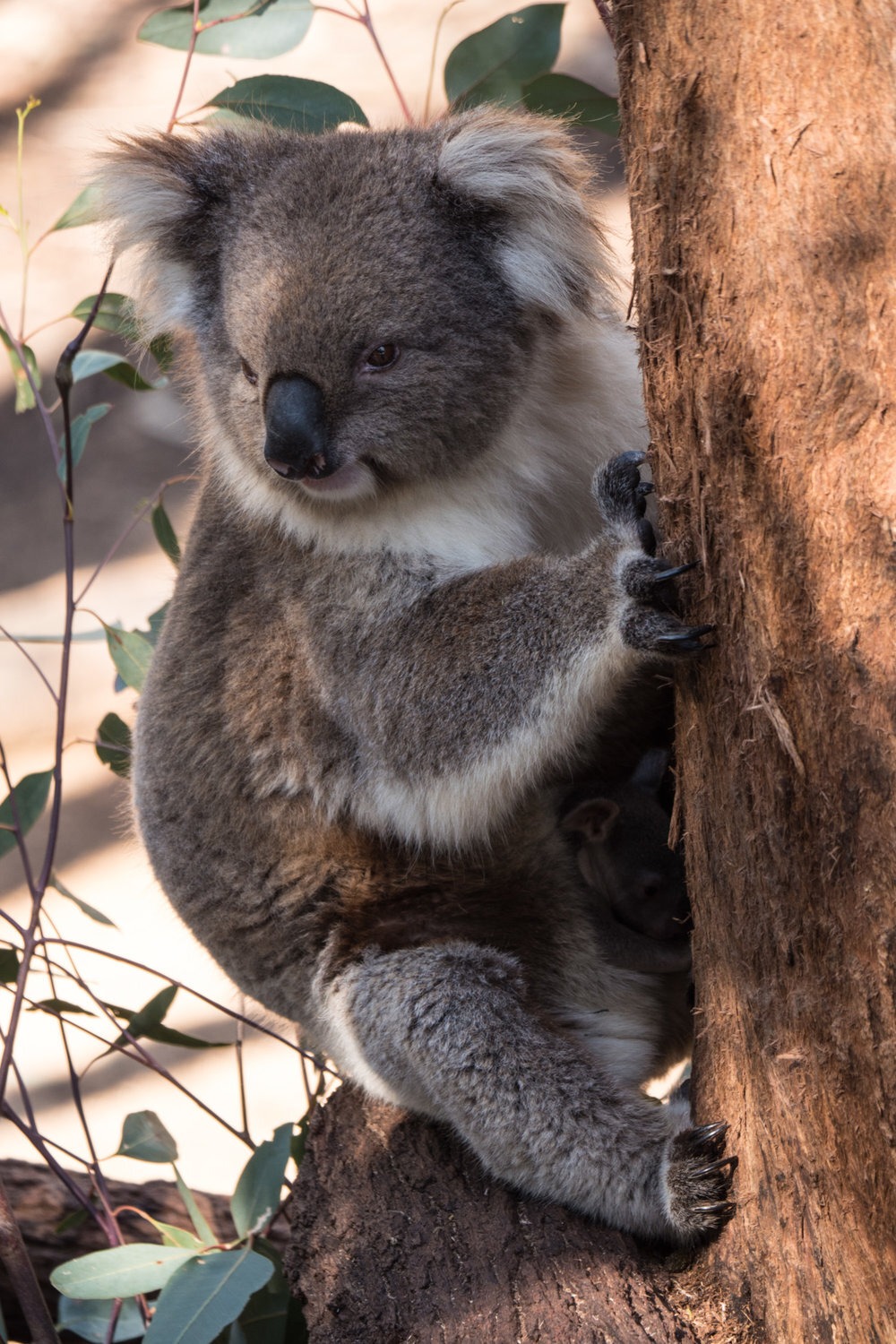
Iconic animals of Australia: Koala at Taronga Zoo. | Photo: Jonathan and Roseann Hanson
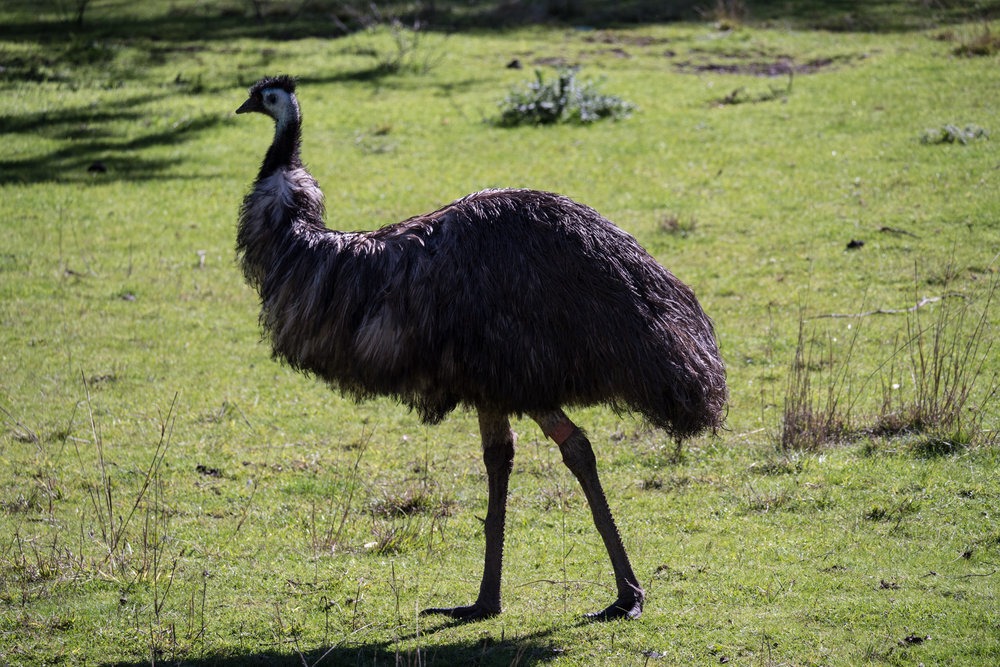
Iconic animals of Australia: Emu at Taronga Zoo. | Photo: Jonathan and Roseann Hanson
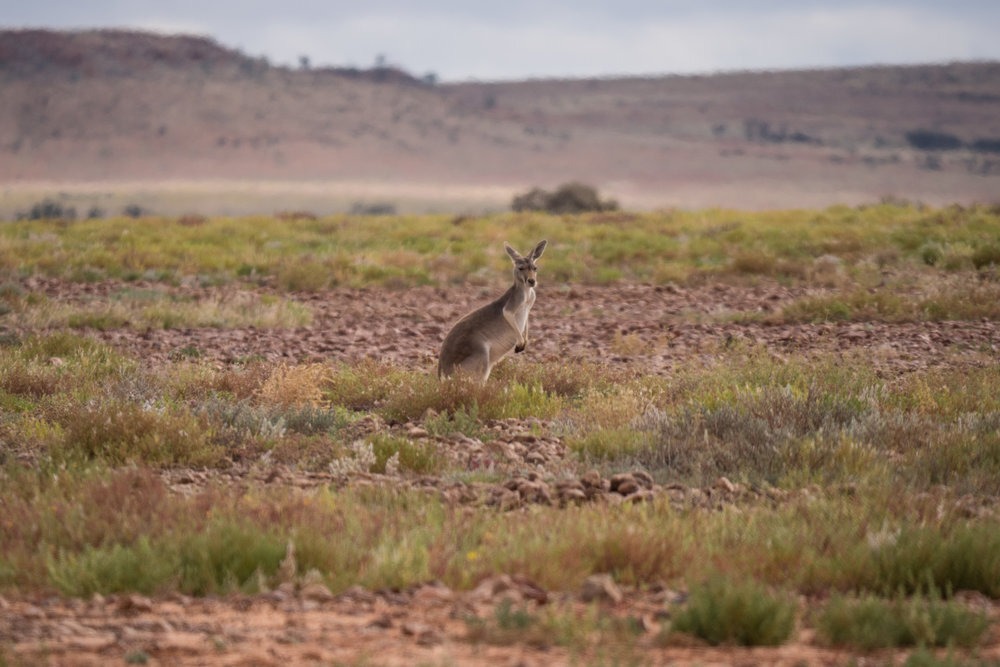
Iconic animals of Australia: Wild kangaroo, Queensland. | Photo: Jonathan and Roseann Hanson
Fast-forward to July 13, as we assemble in Los Angeles at the home of fellow overlanders and adventurers, Joe and Lara. With us are Graham Jackson and Connie Rodman, Overland Expo’s training director and our team’s staff HQ manager, respectively. Shortly after our leap, we dangled the Down Under carrot and cheap airfare. They only hesitated a few minutes longer than we did.
And so the fun began, tossing around ideas of where to explore a truly diverse and enticingly large-yet-accessible country. Since Graham and Connie had been planning to visit Australia for years, they had quite a bit of research already completed. Graham suggested a crossing of the Simpson Desert via the Madigan Line.
Cecil Madigan (1889 – 1947) was an Australian explorer and geologist. He was involved in geological surveys in Antarctica in 1912 before serving in the British Army during WWI, most notably the Battle of the Somme. Throughout the 1930s, Madigan participated in numerous aerial surveys of the “trackless areas” of central Australia. He named the Simpson Desert after the president of the Royal Geographical Society of Australasia.
In 1939, Madigan led the first major expedition across the Simpson Desert and his route, roughly 900 kilometers (559 miles) from Alice Springs, Northern Territories, to Birdsville, Queensland, is now marked by a series of 25 brass markers and is considered one of the more remote and challenging Australia desert tracks one can explore today, crossing some 1,300 sand dunes.
Initially the plan was to source vehicles from one of our Overland Expo Aussie exhibitors, since many of them had been urging us to visit and frequently offered up loaners. But the short notice and bad timing (several big press events for the larger companies had all company vehicles tied up) had us come up empty.
We then looked into renting a couple of Land Cruisers from Britz or similar (from everything we had read about the Madigan Line, we felt Land Cruisers would be advisable over Hiluxes or similar, for the stronger engine and cargo capacity for extra fuel and water).
But not only was a rental looking like $7,500 minimum per vehicle (not including camping gear, or recovery equipment), we also learned we could not use them for a crossing of the Simpson Desert on the Madigan Line, which was one of the “no go” places since it is not a standard tourist route.
About this time Jonathan started emailing me and Graham vehicle listings from websites Gumtree.com and AUStoUSA.com. The latter specializes in selling 25-year-old and older Australian vehicles to Americans and handling the shipping and importation details. Depending on the year purchased, we could drive the vehicle around Australia, and then import it to the US with very little hassle.
On Gumtree he was finding fully outback-kitted vehicles for very reasonable prices. One petrol Toyota Prado (essentially a 4Runner equivalent) had a roof tent, awning, fridge, and all the necessary camping equipment and was listed for $9,000 AUD ($6,870 USD) — about the price for a rental after taxes and registration and insurance. Land Cruiser Troop Carriers — “Troopies” — on both sites were showing up for around $10,000 to $12,000 AUD, but with pretty high mileage and most in this range were older than 1991 and equipped with the less-desirable 2H diesel engine. Newer ones (1992 to 1994) were around $15,000 AUD.
At the very favorable rate of exchange this was putting our own “ultimate” overland vehicle well within reach. Over the last 15 years we’ve driven Troopies across the Libyan Desert in Egypt and throughout Tanzania and Kenya. The 1HZ diesel engine is the definition of tough, long-wearing, reliable, and unstoppable, proven by hundreds of thousands of them in service in the toughest conditions on the planet, used and abused by safari guides, NGO workers, and military service people worldwide.
A couple weeks of searching both sites and Jonathan found a 1991 one-owner Troopy in superb condition, with just 220,000 kilometers on the clock. Aluminum bull bar, no winch, 1HZ, five-speed. During the searches we had the good luck of connecting with AUStoUSA’s Phil Newell, their Gold Coast operations manager and an ace vehicle broker. Phil went to work on our behalf to get a good price. Unfortunately during the time we were sorting things out the owner decided to trade it in at a dealer and we lost it.
Then we found a 1993 at a dealer in Darwin. The photos showed a very clean truck with 244,000 km (151,000 miles) with the 1HZ and five-speed transmission, an ARB bull bar (no winch), TJM suspension, Bridgestone tires in good condition, A/C, and very clean original interior, for $22,000 AUD ($16,800 USD).
Working with both Toni Young at Dustin’s Auto Sales and Phil, we got the truck for the asking price (the dealer would not negotiate down). One bank transfer and several registration forms later, we were the proud owners of our very own Troopy, which Phil was arranging for transport to Sydney for a reasonable amount (about $1300 USD, a bargain considering the distance and that part of the journey was by train). The whole process was made enormously easy through the professional assistance of Toni and Phil.
Graham and Connie had a harder time finding a vehicle. Dyed-in-the-wool Land Rover loyalists, they looked at Defenders but could find none expedition-worthy in their price range. At the 11th hour they found a higher-mileage (431,000 km) 1994 1HZ75 five-speed with front and rear lockers, OME suspension, factory bullbar, Kaymar rear bumper, dual-batteries, and interior drawer-deck system for only $11,500 AUD ($8700 USD) and arranged for delivery from Brisbane to Sydney.
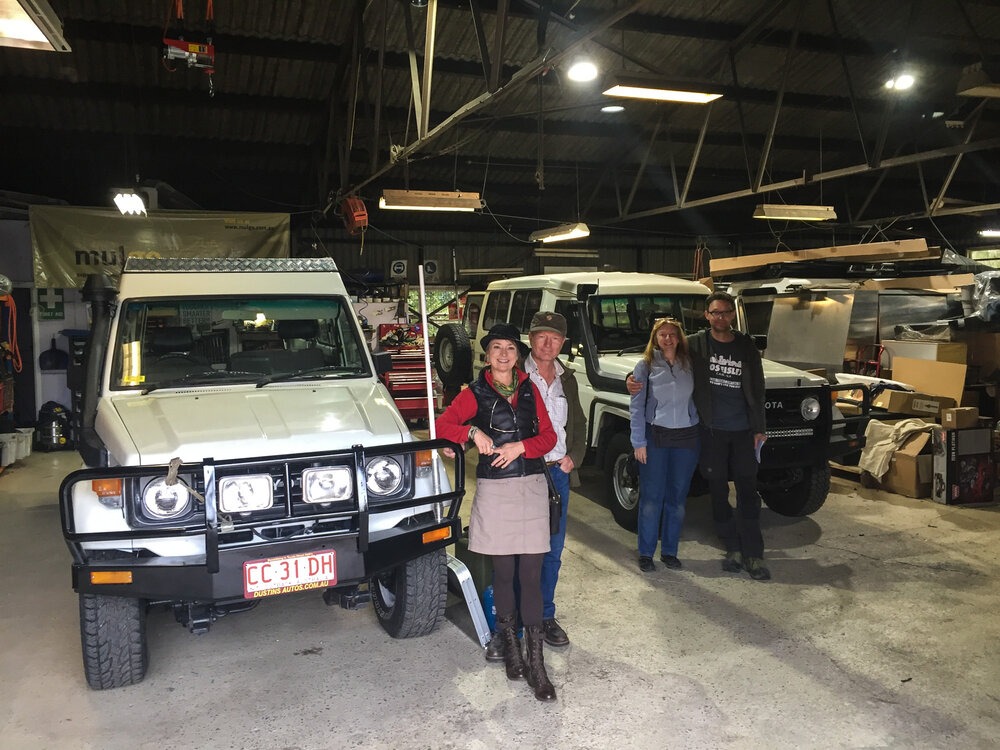
Troopies at Expedition Centre in Sydney, ready for their first adventure with us. | Photo: Jonathan and Roseann Hanson
Let the adventure begin.
It turns out, everything you have heard about Australia is true:
The Outback (the vast and wild desert, grasslands and woodlands comprising the center) is one of the world’s finest overlanding destinations. Actually the whole country is — the stunning coasts, the pastoral highlands, the soaring mountains, and the vibrant cities. The wildlife is legendary for its uniqueness. Even for those of us who have spent considerable time traveling and working in Africa, the biodiversity and oddities of evolution on this long-isolated continent astounds. I don’t think I will ever tire of watching the locomotion of a kangaroo.
Beer is a national passion. A good pub can be found nearly everywhere. (So can great coffee. Maybe something to do with the volume of beer consumed, not sure, need to test a bit more.)
The people are friendly. Really, really friendly—and polite. All the Australians who have come to Overland Expos have been exceedingly nice but we were not prepared for the whole damn country to be filled with their likes. In 6,000 kilometers over nearly a month, we encountered just three Australians who were rude (a fourth, a woman at the roadhouse in Kulgera, was from the Balkans, so we won’t count her).
And the overlanding. The legendary outback overlanders are the most-prepared, most-traveled people we have ever seen. For a continent with fewer people total than southern California, the number of Aussies exploring the Outback in exceptionally well-kitted vehicles is enormous. While driving tracks in far corners of Queensland, Northern Territories, New South Wales and South Australia, we passed more fully equipped overland vehicles than attend an Overland Expo. Our plain-jane Troopies were unremarkable and common, like Ford F150s in Arizona.
Suffice it to say, we fell in love with Australia — and Australians — within a few hours of landing in Sydney, on the southeast coast.
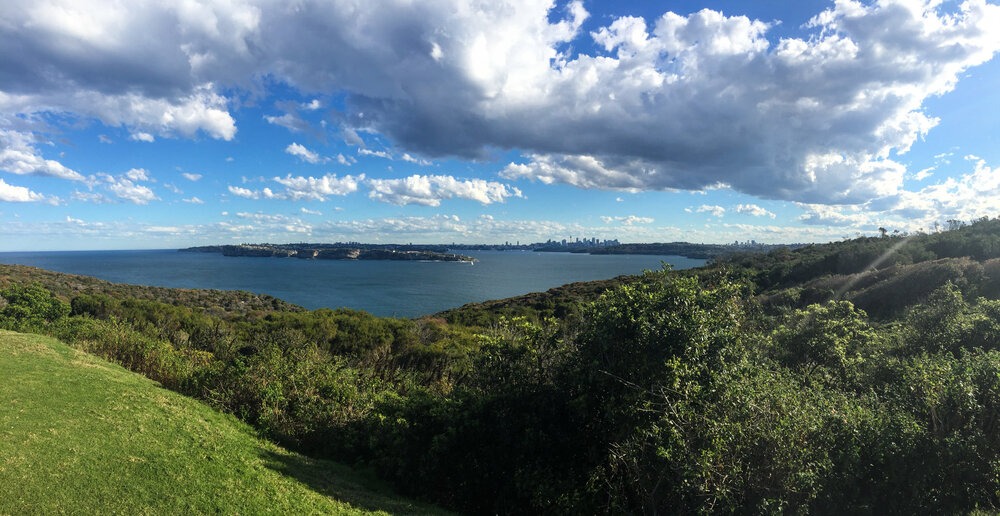
Sydney Harbor. | Photo: Jonathan and Roseann Hanson
July is mid-winter in Oz, and the weather was both cool-and-rainy and warm-and-sunny, alternating often in a span of 30 minutes. Our friends Geoff and Catherine Farland picked us up and whisked us to their home in North Sydney; the Farlands’ son, Alistair, was one of our presenters at Overland Expo 2014 EAST, on his way down the Americas on his first big adventure on his KLR motorcycle. Alistair was passionate about inspiring his Millennial generation to get out exploring the world, and he charmed many of us at Overland Expo.
Tragically, he died in an accident a few weeks after the show, but with his parents we have built a charity fund to help inspire young people like him to pursue their own adventures—and keep his passion alive (see ConserVentures.org/change-your-world-fund). We were honored to carry Alistair’s Aussie flag with us on our journey.
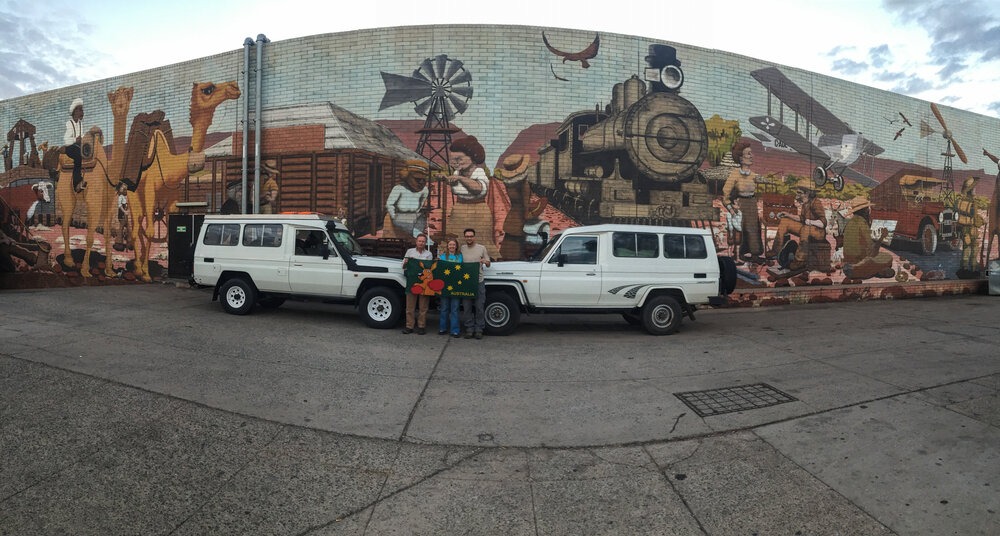
Starting out in Alice Springs; as of August 2016, the flag then attended Burning Man 2016 with several of Alistair’s friends. | Photo: Jonathan and Roseann Hanson
With little time to sightsee (much to the Farlands’ dismay), we headed down to Expedition Centre to meet our Land Cruisers. Finding Daniel Fluckiger was one of those gems that every once in a while drop down out of the internet. We had been googling “Land Cruiser expedition campers” to get ideas for our future Troopy, and three companies in Australia surfaced. I emailed all three. Only one replied, happily the one with the pop-top and camper interior we admired the most. Daniel was professional and enthusiastic, and—maybe he regrets this — willing to take on the work of converting our truck into a camper in a very short timeframe.
As the photos attest, we were astounded to find the superb-quality pop-top ready, along with an amazing amount of other work: solar power, dual batteries, full service, and installation of Warn winch, ARB lights, MaxTrax, and tie-down points for our Kanz Kitchen and National Luna fridge.
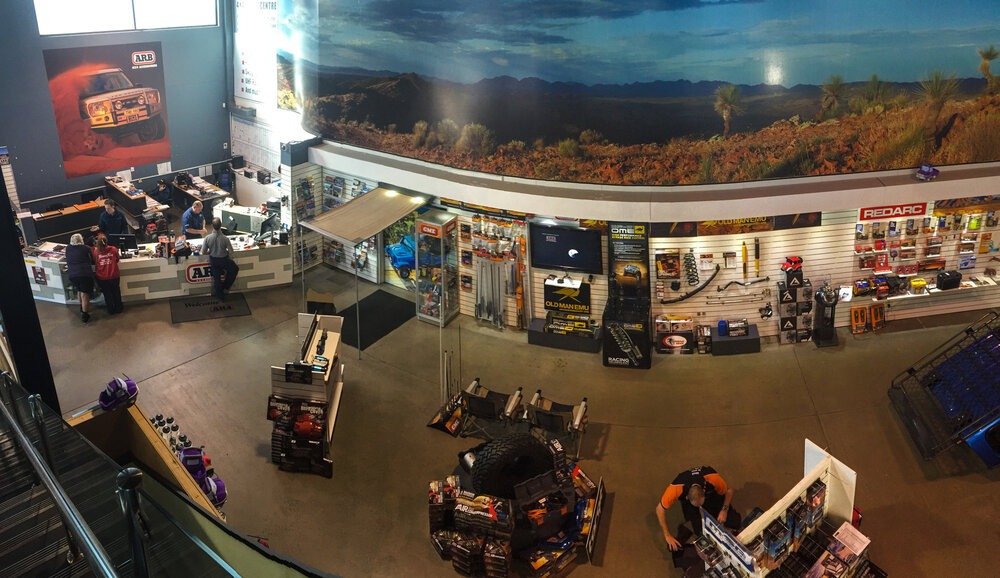
Shopping spree at the ARB store in St. Peters. | Photo: Jonathan and Roseann Hanson
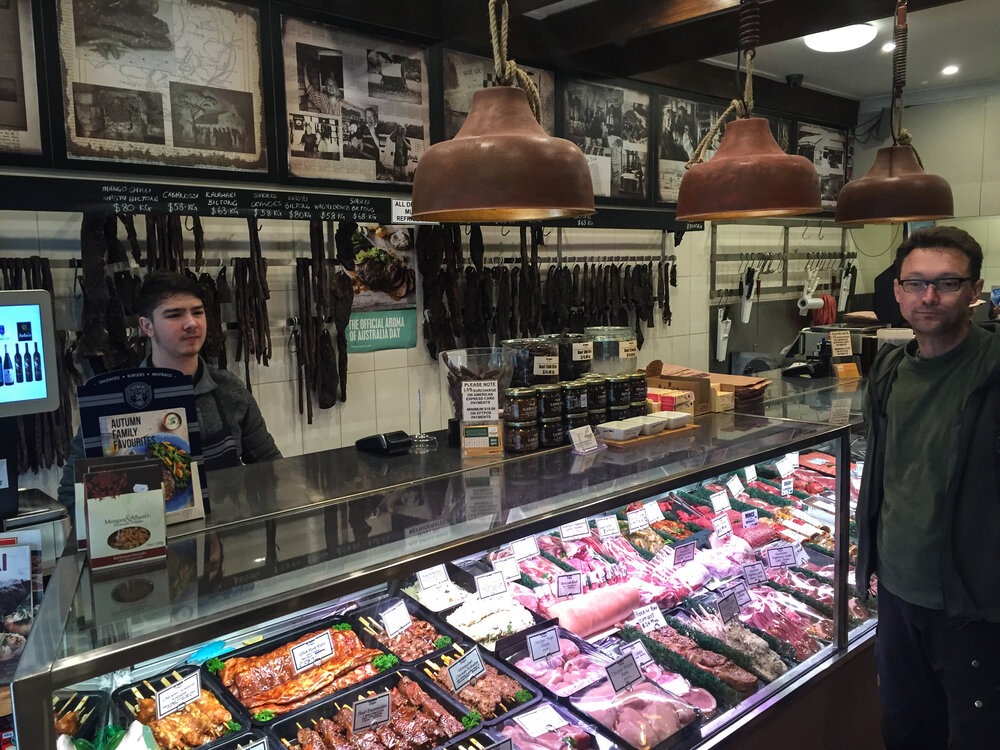
Springbok Delights became our favorite provisioner in Australia. | Photo: Jonathan and Roseann Hanson
image 10 – Shopping spree at the ARB store in St. Peters. and image 11 – Springbok Delights became our favorite provisioner in Australia.
Vehicles sorted, we then embarked on a three-day shopping spree that bumped the GNP of Australia by more than a few points: ARB in St. Peters (recovery gear, tool rolls, Hi-Lift and mount, camp lighting, deflators and more); Kathmandu, a Patagonia-equivalent (warmer boots for me, chairs for Graham and Connie); and Anaconda, a sporting goods superstore that had good prices on cookware, Dutch ovens (“potjie” in South Africa”), utensils, and water carriers. We also girded our loins and went to Ikea for bedding. It has the best prices anywhere on top-quality down and cotton sheets. (Note: It’s just as creepy in Australia as it is in the U.S.). For the rest of our kitchenware and food, we found Woolworth’s (“Woolies”) to be the best (forget Target there, it’s not the same quality as the U.S.).
The fourth morning after landing we woke early to load up the trucks — to find a decidedly steady rain blanketing Sydney. Cold and damp, we were on the road by 11 am, stopping along the way at Springbok Delights to pick up our pre-packed meat order (Australia has a lot of South African expats, and thankfully these run a butcher shop of the first order — everything vacuum-packed and pre-frozen). By that evening we had traversed the southern Highlands, a paradise of green pastures separated by rolling rivers and rocky canyons with tall eucalyptus, and hove up in Wagga Wagga (just “Wagga” to locals), the first of the old gateway towns to the Outback.
The next 72 hours were a blur of 700-km days as we crossed a vast portion of Australia’s heartland from Wagga to Port Augusta on the coast (north of Adelaide) to Alice Springs via Coober Pedy and Marla. Every night we broke our “don’t drive at night” rule, and paid for it with more near-misses with kangaroos than we can count. It’s a wonder there are any ‘roos left in this country at all, given the obvious carnage on display each morning.
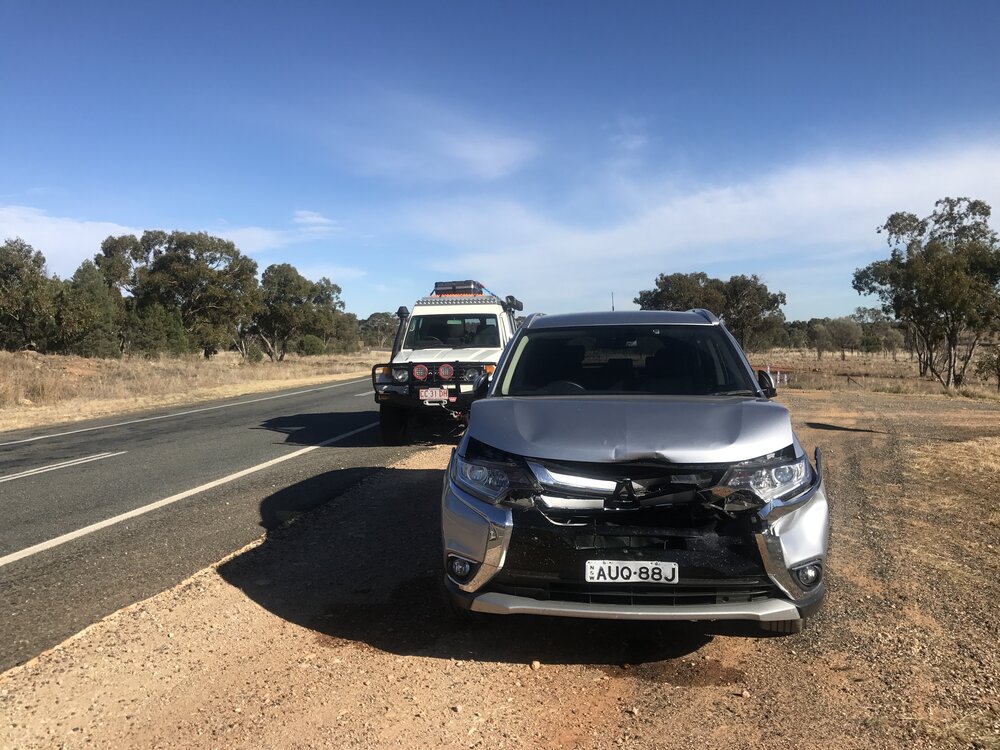
Kangaroo carnage in the morning. Don’t drive at night, and roo-bars do work. | Photo: Jonathan and Roseann Hanson
Because we had decided on the Madigan crossing, which required a full nine to 10 days in the desert, we had to move quickly to Alice — not our preferred travel pace. As a result we only had a few hours in the legendary outback locale of Coober Pedy, best known for opals (and the site of filming for “Mad Max” and “Priscilla, Queen of the Desert”). Nonetheless we managed to find a family-owned shop has been mining opals since the 60s—dad mines them, mom cuts and polishes them, and son sets them into beautiful pieces of jewelry. Jonathan bought me a gorgeous ring for my birthday. As they say, “Good onya, mate.”
Alice Springs was much more civilized than we’d anticipated from accounts in the earlier part of the last century. We had a strange but hilarious experience at the Overlander’s Steakhouse, which we had to visit for obvious reasons. Take our word for it: don’t, unless you like overcooked meat, bad service, and silly tourist stuff.
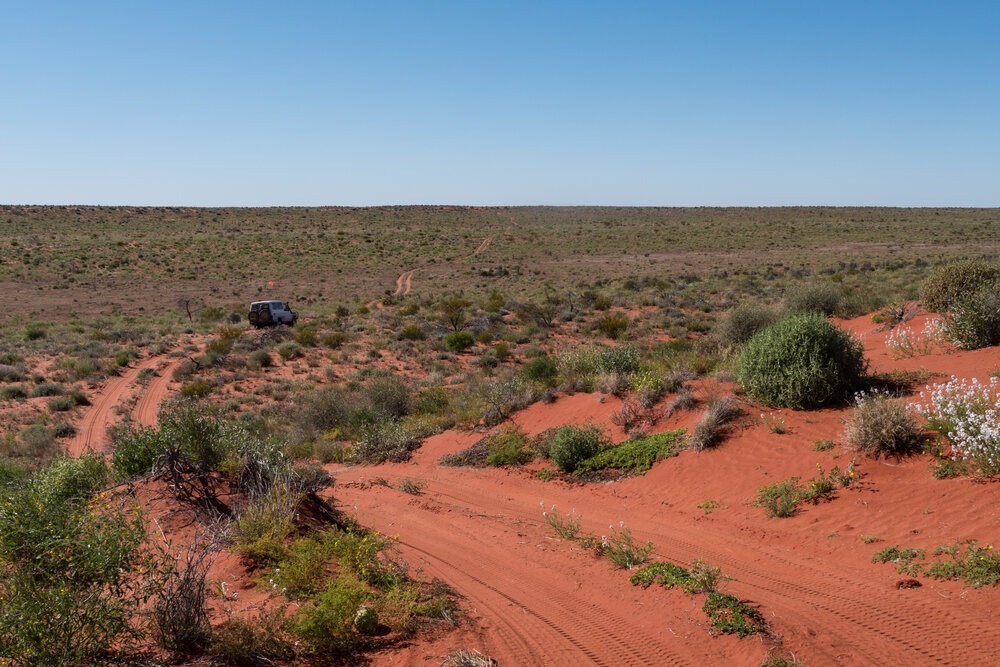
Heading into the deep backcountry of the Simpson Desert. | Photo: Jonathan and Roseann Hanson
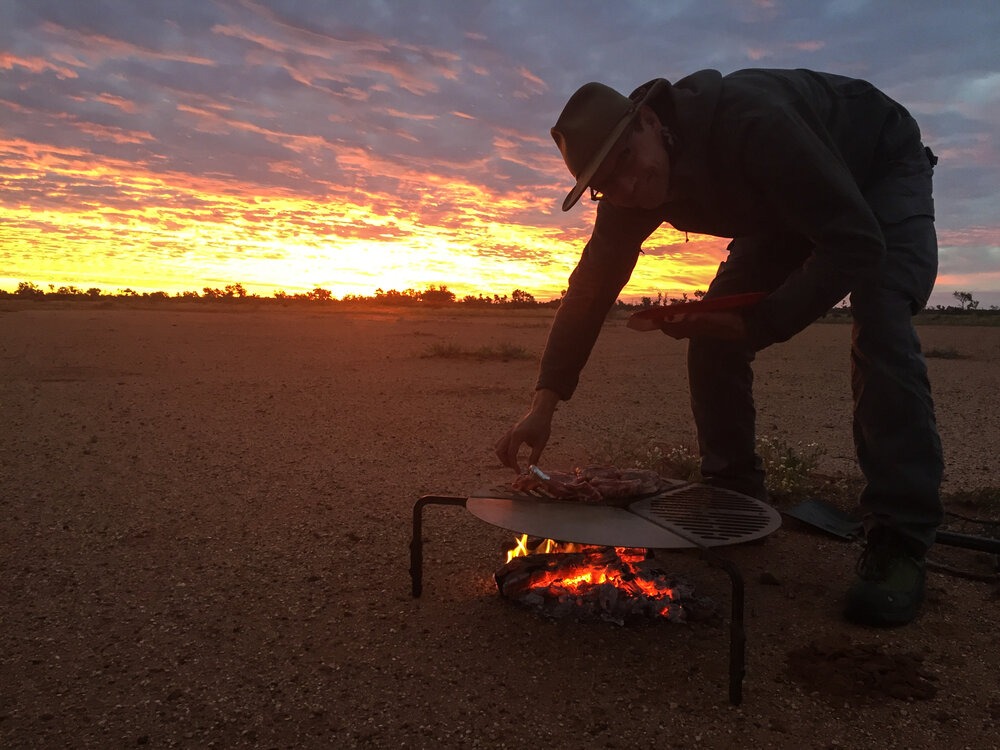
First camp in the Outback, we dig into the Springbok Delights steaks. | Photo: Jonathan and Roseann Hanson
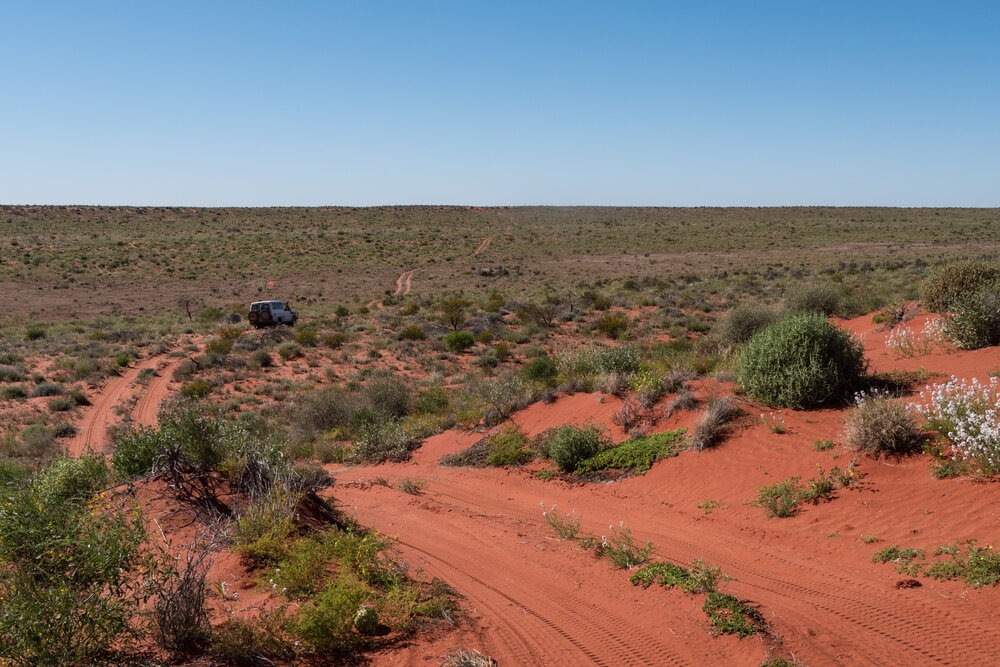
Coming up in Part 2: Crossing the Simpson Desert on the Madigan Line — 12 days unsupported in the backcountry.
Header image: Jonathan and Roseann Hanson
